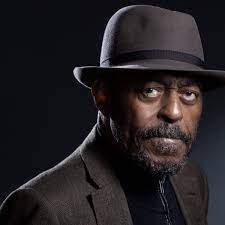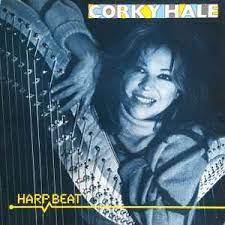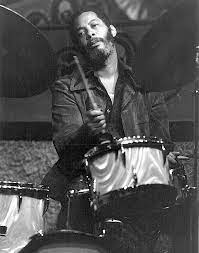
Three Wishes
The Baroness was having a conversation with Archie Shepp when she brought up the topic of three wishes and asked him what his would be. He responded by telling her:
- “To be free of poverty.”
- “I don’t know the next.”
- “To be free.”
*Excerpt from Three Wishes: An Intimate Look at Jazz Greats ~ Compiled and Photographed by Pannonica de Koenigswarter
More Posts: baroness,history,instrumental,jazz,music,pannonica,saxophone,three,wishes

Daily Dose Of Jazz…
Ron Rubin was born in Liverpool, London, England on July 8, 1933, to David and Louise Rubin. Music was important to the family and he learned piano from an early age. Becoming interested in jazz in his early teens while attending Liverpool College school, he was suspended for playing jazz on the school piano. Not being put off, he studied law under his uncle but it wasn’t for him and he signed up for the Royal Army Service Corps for a two year stint.
In the army he played piano with the Rhine River Jazz and Germany Rhine bands in Germany where he was stationed. After his service, in 1953 he picked up some gigs around Merseyside, London where he was playing guitar and clarinet at this time. Ron practiced hard on the piano and found solo work at clubs in London’s Soho. Taking up the double bass in 1955 and within a few weeks he was playing gigs with Ralph “Bags” Watmough and Tony Davis’s Gin Mill Four. In 1957 he played opening night at the Cavern Club with the Merseysippi and Watmough bands.
Moving to London in the 60s Ron played with a wide variety of bands on piano and double bass with Glyn Morgan, Dick Williams, Brian Leake, the Fairweather-Brown band, Mike Taylor, Group Sounds Five, the Ronnie Selby Trio, Fat John Cox and Bruce Turner. He accompanied visiting musicians Bill Coleman, Henry “Red” Allen and Ray Nance and with groups like those of Long John Baldry and the Hoochie-Coochie Men, and Manfred Mann.
Through the 1970s Rubin toured with the Lennie Best Quartet, Sandy Brown, Keith Ingham, Alex Welsh, Colin Purbrook, and accompanied Billy Eckstine. He had his own band at the Roundhouse Bar and was with the John Picard Band for three years and recorded regularly. The Eighties saw him touring with Wild Bill Davison and playing with Fatty George, Geoff Simkins, Keith Smith and Oscar Klein, George Howden, Brian Leake and Earl Okin.
By the end of the decade he was playing bass with the Bruce Turner Quartet before joining George Melly and John Chilton’s Feetwarmers. The following decades he played with Campbell Burnap’s band, then joined George Melly and John Chilton again and continued playing and touring. After surviving cancer in 2001 he slowed down to playing occasionally. In his later years Ron spent many happy hours writing his Jottings From A Jazzman’s Journal, a record of his life as a musician.
Pianist, bassist and poet Ron Rubin, who for many years was at the centre of the British jazz scene, transitioned on April 14, 2020 at the age of 86.

Three Wishes
Ramsey Lewis was questioned about his three wishes one night by Pannonica and his response was a simple one:
- “Later for that!”
*Excerpt from Three Wishes: An Intimate Look at Jazz Greats ~ Compiled and Photographed by Pannonica de Koenigswarter
More Posts: baroness,history,instrumental,jazz,music,pannonica,piano,three,wishes

Daily Dose Of Jazz…
Corky Hale was born Merrilyn Hecht on July 3, 1936 in Freeport, Illinois. She learned piano, harp, flute, and cello by the time she was in her teens. She went on to study at the Chicago Music Conservatory and then at Interlochen Center for the Arts in Michigan.
By age 16 she had enrolled in Stephens College, a school for young ladies, for her last year of high school. After graduation she decided to move to Hollywood, California to be a musician but her father had other plans, sending her to nearby University of Wisconsin–Madison. After a year she dropped out, intent on moving to Hollywood but again a compromise with her parents led her to UCLA.
During the 1950s, she became a studio musician in Hollywood, playing harp on albums by Chet Baker, June Christy, Ella Fitzgerald, Anita O’Day, and Frank Sinatra. She worked as a vocalist with Freddy Martin at the Coconut Grove in Los Angeles, California. Jerry Gray invited her to perform with his band in Las Vegas, Nevada where she played piano for Billie Holiday and accompanied her on tour.
As a solo act, she recorded the album Corky Hale Plays George Gershwin and Vernon Duke with Buddy Collette, Howard Roberts, and Chico Hamilton. The late Sixties saw her accompany Tony Bennett on The Tonight Show Starring Johnny Carson and sang a song by herself.
She has worked with Liberace, Barbra Streisand, Elkie Brooks, Harry James, Peggy Lee, James Brown, Spike Jones, George Michael, Roberta Flack, Les McCann, Herbie Mann, Nina Simone and Björk, to name a few. Hale has also produced plays, including Give ‘Em Hell, Harry, starring Jason Alexander and Lullaby of Broadway, a profile of the lyricist Al Dubin. She has appeared at Vibrato, Catalina Bar & Grill, The White House, and the Kennedy Center.
At the University of Wisconsin, Hale was one of the few white students to join the NAACP. She was a birth control teacher at Planned Parenthood in New York and is on the National Advisory Board of NARAL and on the board of WRRAP. She is an American Film Institute associate and is the founder of Angel Harvest, an organization which redistributes unused food from restaurants, hotels, and events to hungry and needy people in Los Angeles.
Harpist, pianist, flutist, and vocalist Corky Hale, who recorded four albums as a leader and has been a theater producer, political activist, restaurateur, and is the owner of the Corky Hale Women’s Clothing Store in Los Angeles.
More Posts: bandleader,flute,harp,history,instrumental,jazz,music,piano,vocal

Three Wishes
Baroness Pannonica asked Ben Riley if granted what would be his three wishes and this is what he responded:
- “Just one wish, and I can do the rest. I want to do something I like to do. Not anything with money, like everyone else is doing. I would really like to feel good and not have to pay for it.”
*Excerpt from Three Wishes: An Intimate Look at Jazz Greats ~ Compiled and Photographed by Pannonica de Koenigswarter
More Posts: baroness,drums,history,instrumental,jazz,music,pannonica,three,wishes



